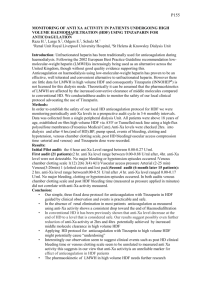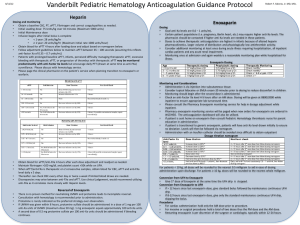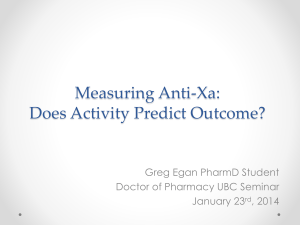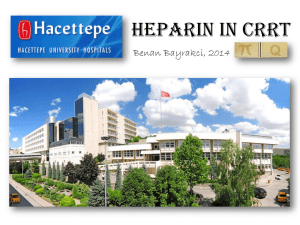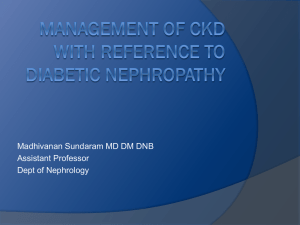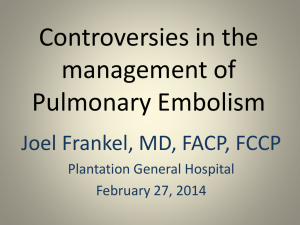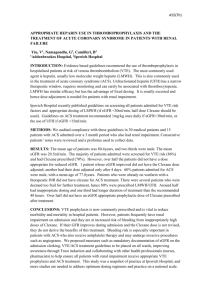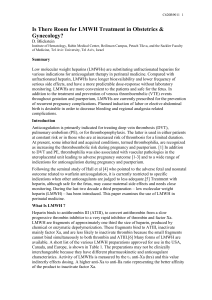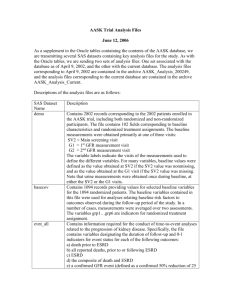use of lmwh in patients with low gfr
advertisement
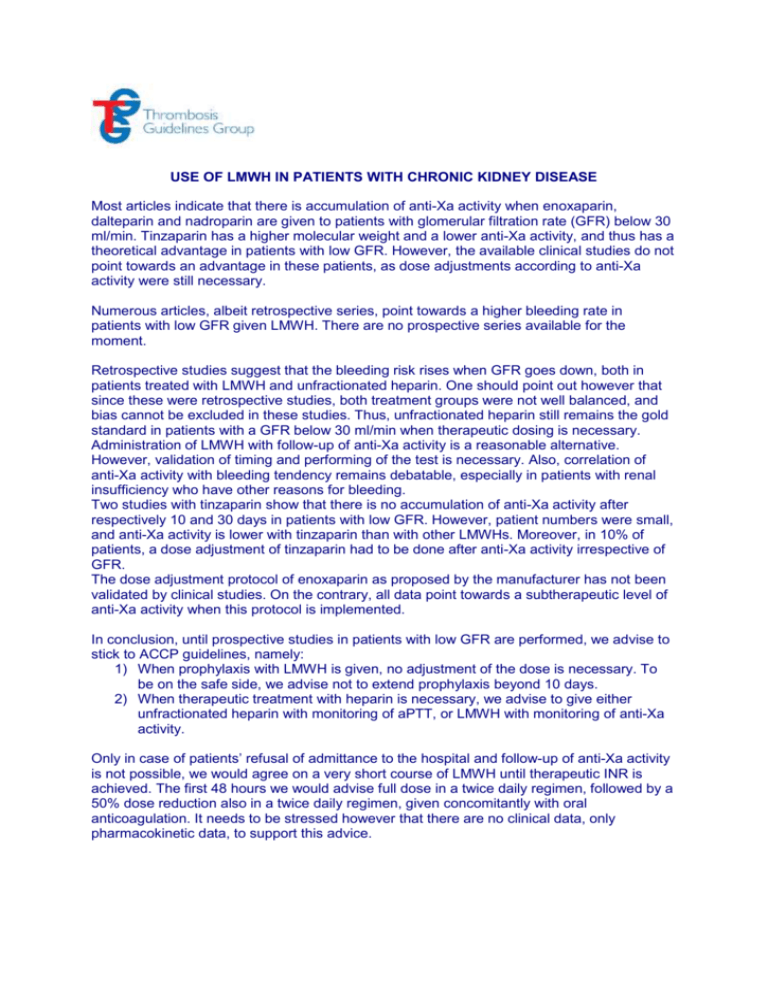
USE OF LMWH IN PATIENTS WITH CHRONIC KIDNEY DISEASE Most articles indicate that there is accumulation of anti-Xa activity when enoxaparin, dalteparin and nadroparin are given to patients with glomerular filtration rate (GFR) below 30 ml/min. Tinzaparin has a higher molecular weight and a lower anti-Xa activity, and thus has a theoretical advantage in patients with low GFR. However, the available clinical studies do not point towards an advantage in these patients, as dose adjustments according to anti-Xa activity were still necessary. Numerous articles, albeit retrospective series, point towards a higher bleeding rate in patients with low GFR given LMWH. There are no prospective series available for the moment. Retrospective studies suggest that the bleeding risk rises when GFR goes down, both in patients treated with LMWH and unfractionated heparin. One should point out however that since these were retrospective studies, both treatment groups were not well balanced, and bias cannot be excluded in these studies. Thus, unfractionated heparin still remains the gold standard in patients with a GFR below 30 ml/min when therapeutic dosing is necessary. Administration of LMWH with follow-up of anti-Xa activity is a reasonable alternative. However, validation of timing and performing of the test is necessary. Also, correlation of anti-Xa activity with bleeding tendency remains debatable, especially in patients with renal insufficiency who have other reasons for bleeding. Two studies with tinzaparin show that there is no accumulation of anti-Xa activity after respectively 10 and 30 days in patients with low GFR. However, patient numbers were small, and anti-Xa activity is lower with tinzaparin than with other LMWHs. Moreover, in 10% of patients, a dose adjustment of tinzaparin had to be done after anti-Xa activity irrespective of GFR. The dose adjustment protocol of enoxaparin as proposed by the manufacturer has not been validated by clinical studies. On the contrary, all data point towards a subtherapeutic level of anti-Xa activity when this protocol is implemented. In conclusion, until prospective studies in patients with low GFR are performed, we advise to stick to ACCP guidelines, namely: 1) When prophylaxis with LMWH is given, no adjustment of the dose is necessary. To be on the safe side, we advise not to extend prophylaxis beyond 10 days. 2) When therapeutic treatment with heparin is necessary, we advise to give either unfractionated heparin with monitoring of aPTT, or LMWH with monitoring of anti-Xa activity. Only in case of patients’ refusal of admittance to the hospital and follow-up of anti-Xa activity is not possible, we would agree on a very short course of LMWH until therapeutic INR is achieved. The first 48 hours we would advise full dose in a twice daily regimen, followed by a 50% dose reduction also in a twice daily regimen, given concomitantly with oral anticoagulation. It needs to be stressed however that there are no clinical data, only pharmacokinetic data, to support this advice.
